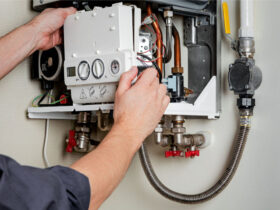Floods can be devastating, leaving behind a trail of damage that can be both overwhelming and costly. Whether you’ve experienced a minor water intrusion or a major flood, restoring your home effectively requires prompt action and a systematic approach. Here’s a comprehensive guide to help you navigate the process of restoring your home after flood damage near me.
-
Ensure Safety First
Before entering your home after a flood, make sure it’s safe to do so. The structural integrity of your home may be compromised by floodwaters, and there may be concealed hazards, such as unstable foundations or contaminated water. If you have any doubts about safety, consult with a professional before proceeding.
-
Document The Damage
Once it’s safe, start documenting the damage for insurance purposes. Take detailed photographs or videos of all affected areas and belongings. The documentation provided will be essential for the purpose of submitting a claim with your insurance provider. Make sure to note the condition of items and any structural damage. If possible, create a written inventory of damaged items, including their estimated value.
-
Contact Your Insurance Company
Please notify your insurance provider of the flood damage at your earliest convenience. Adhere to their claim filing procedures and submit the documentation you have collected. In order to evaluate the extent of the damage and figure out the compensation you are entitled to, an adjuster may visit your residence. Keep records of all communications with your insurance provider.
-
Remove Standing Water
The next step is to remove standing water from your home. Utilize a bilge pump or wet/dry vacuum to extract the maximum amount of water. For large amounts of water, you may need to hire a professional water extraction service. It’s important to address this promptly to prevent mold growth and further damage.
-
Dry Out Your Home
Once the water is removed, begin the drying process. Utilize blowers and dehumidifiers to accelerate the drying process, and open windows and doors to facilitate ventilation. To prevent mold growth, it is important to remove damp carpets, rugs, and other flooring materials, as they can trap moisture. If the floodwaters were contaminated, consider disposing of these items to avoid health risks.
-
Clean And Disinfect
Floodwaters can carry harmful bacteria and contaminants, making thorough cleaning and disinfecting essential. Use a disinfectant to eliminate any remaining germs, and clean all affected surfaces with detergent and water. Pay special attention to areas that were submerged in water, including walls, floors, and appliances. Exercise caution when handling cleansing agents and contemplate the use of protective equipment, including masks and gloves.
-
Assess And Repair Structural Damage
Check for any structural damage to your home, such as weakened foundations, sagging ceilings, or warped walls. Inspect and rectify any damage by engaging a qualified contractor or structural engineer. In order to guarantee the security and stability of your residence, it is imperative to resolve these concerns.
-
Address Electrical And HVAC Systems
Electrical systems and HVAC equipment may be damaged by floodwater, which can result in a significant risk of electrocution or fire. Before power is restored, it is recommended that a licensed electrician inspect the electrical system and appliances. Additionally, check your heating, ventilation, and air conditioning (HVAC) systems for water damage. Professional servicing may be required to ensure they are safe and operational.
-
Handle Mold And Mildew
Mold and mildew can develop quickly in damp environments, making it essential to address these issues as soon as possible. Check your residence for indications of mold growth, including visible mold spots or musty aromas. Remove and discard any moldy materials, and clean affected areas with a mixture of water and detergent. In severe cases, it may be necessary to hire a professional mold remediation service.
-
Restore And Rebuild
Once your home is dry and free of contaminants, you can begin the restoration and rebuilding process. This may entail the repair or replacement of insulation, flooring, and drywall that has been damaged. Repaint walls, reinstall cabinetry, and address any other aesthetic or functional repairs needed. Keep in mind that rebuilding may take time, so plan accordingly and be patient throughout the process.
-
Prevent Future Flooding
After restoring your home, take steps to prevent future flooding. Consider installing flood barriers, improving drainage systems, and elevating electrical appliances and HVAC units. Regularly maintain gutters and downspouts to ensure they function properly. If you live in a flood-prone area, consult with experts on additional preventive measures.
-
Seek Professional Help
Restoring a home after a flood can be a complex and time-consuming process. If you’re unsure about any aspect of the restoration or if the damage is extensive, don’t hesitate to seek professional help. Restoration experts can provide valuable guidance and services to ensure your home is thoroughly cleaned, repaired, and restored to its pre-flood condition.
Conclusion
The restoration of your property following flood damage necessitates a meticulous and methodical approach. By ensuring safety, documenting damage, and addressing water removal, drying, cleaning, and repairs promptly, you can effectively navigate the restoration process. While it may be challenging, taking the right steps can help you return to a safe and comfortable home.




